15 Life-Saving Car Essentials Every Smart Parent Packs (But Most Forget)
Ensuring your family’s safety on the road involves more than just regular vehicle maintenance; it’s about being prepared for the unexpected. While many parents remember the basics, certain items are often overlooked yet can be crucial in emergencies. This guide highlights 15 essential car items that can make a significant difference when unforeseen situations arise.
1. Comprehensive First Aid Kit
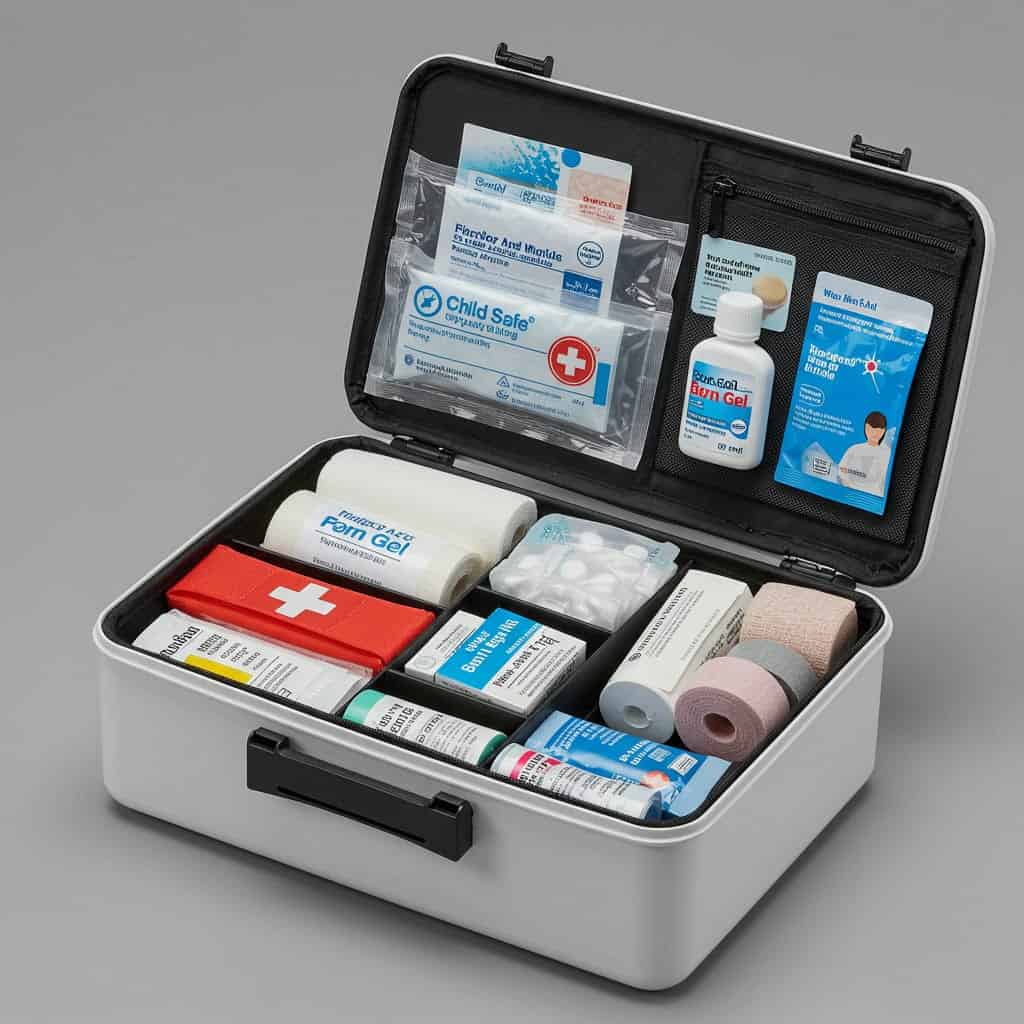
A well-stocked first aid kit is essential for addressing injuries promptly. Beyond basic bandages, include items like burn gel, tweezers, and child-safe pain relievers. These additions ensure preparedness for various emergencies, whereas minimal kits may fall short in critical situations.
2. Multi-Purpose Tool
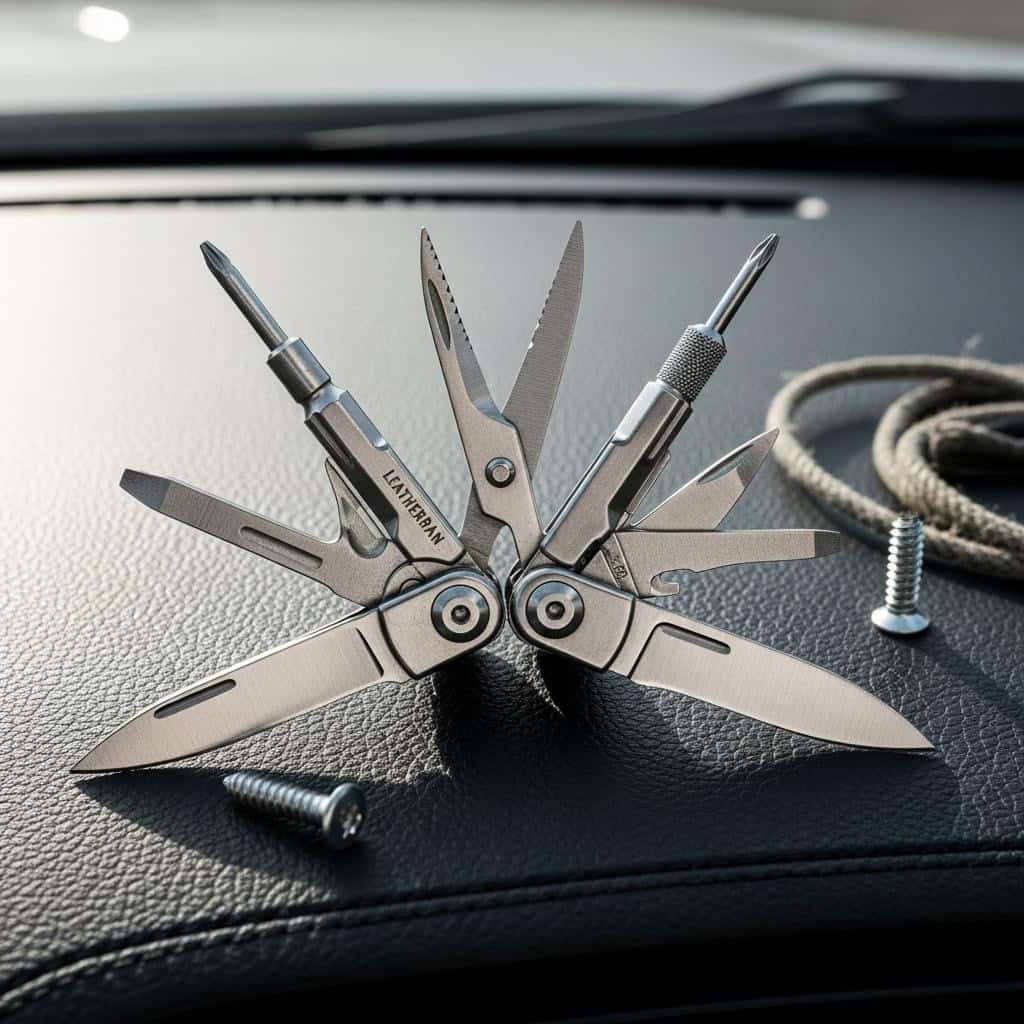
A compact multi-tool, such as the Leatherman Wave Plus, consolidates essential tools like screwdrivers, scissors, and knives into a single device. This versatility allows for quick fixes both inside and outside the vehicle, eliminating the need for multiple single-use tools. For instance, you can tighten a loose screw on the dashboard or cut a piece of rope for an emergency situation. Having a multi-tool ensures you’re prepared for various minor repairs without the bulk of carrying individual tools.
3. Window Breaker & Seatbelt Cutter

In emergencies, a dedicated tool for breaking windows and cutting seatbelts is vital. Standard escape methods, like using hands or improvised tools, can be ineffective, especially if you’re injured or disoriented. A specialized device, such as the resqme tool, allows you to quickly cut through jammed seatbelts and shatter tempered glass windows with minimal effort. This ensures a swift escape, even in challenging situations.
4. Emergency Blanket
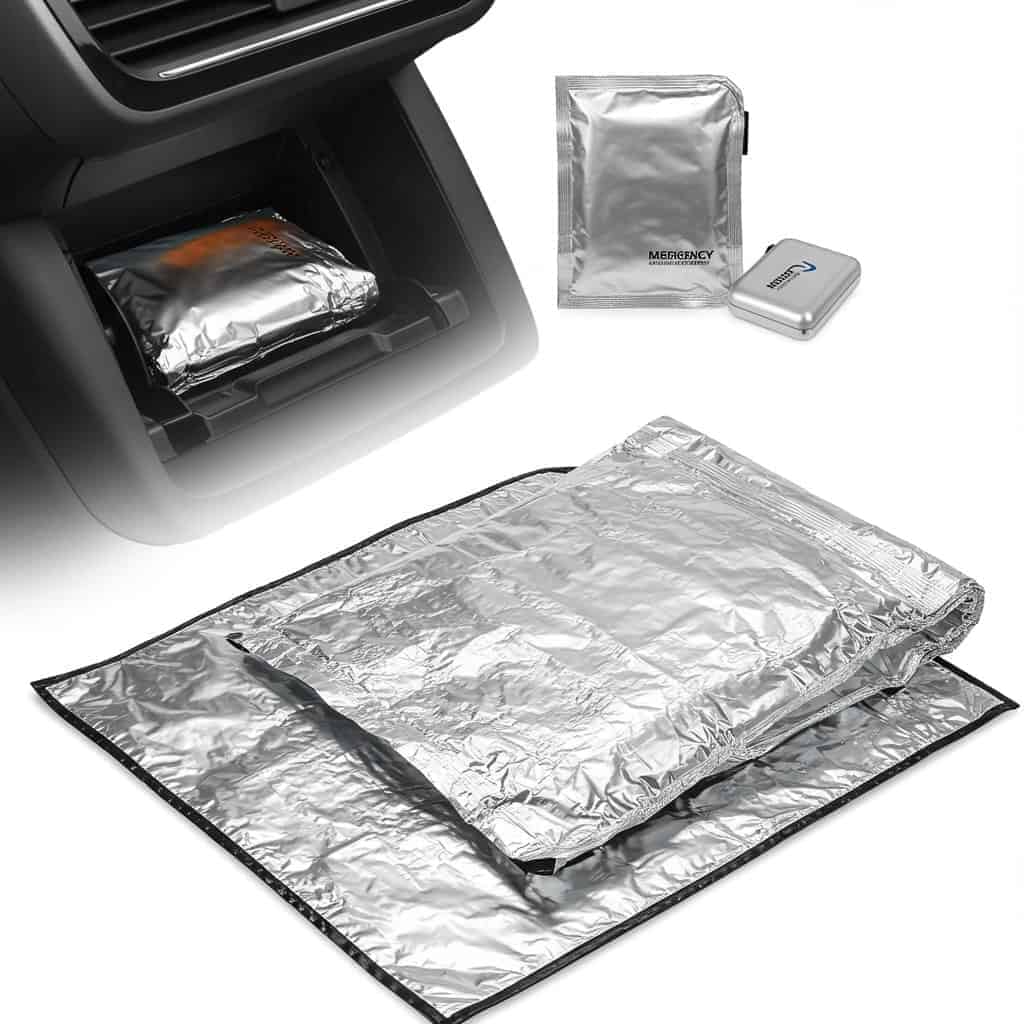
An emergency blanket, also known as a space blanket, is a lightweight, compact tool that reflects up to 90% of your body heat, making it invaluable in cold conditions. Unlike bulky camping blankets, these thin, foil-like sheets fold into a small package, easily fitting in your car’s glove compartment or emergency kit. Beyond warmth, they serve multiple purposes: as a makeshift shelter, a signaling device for rescue, and protection against wind and rain. Their versatility ensures you’re prepared for various emergencies, regardless of the season.
5. Charging Cables and Power Bank
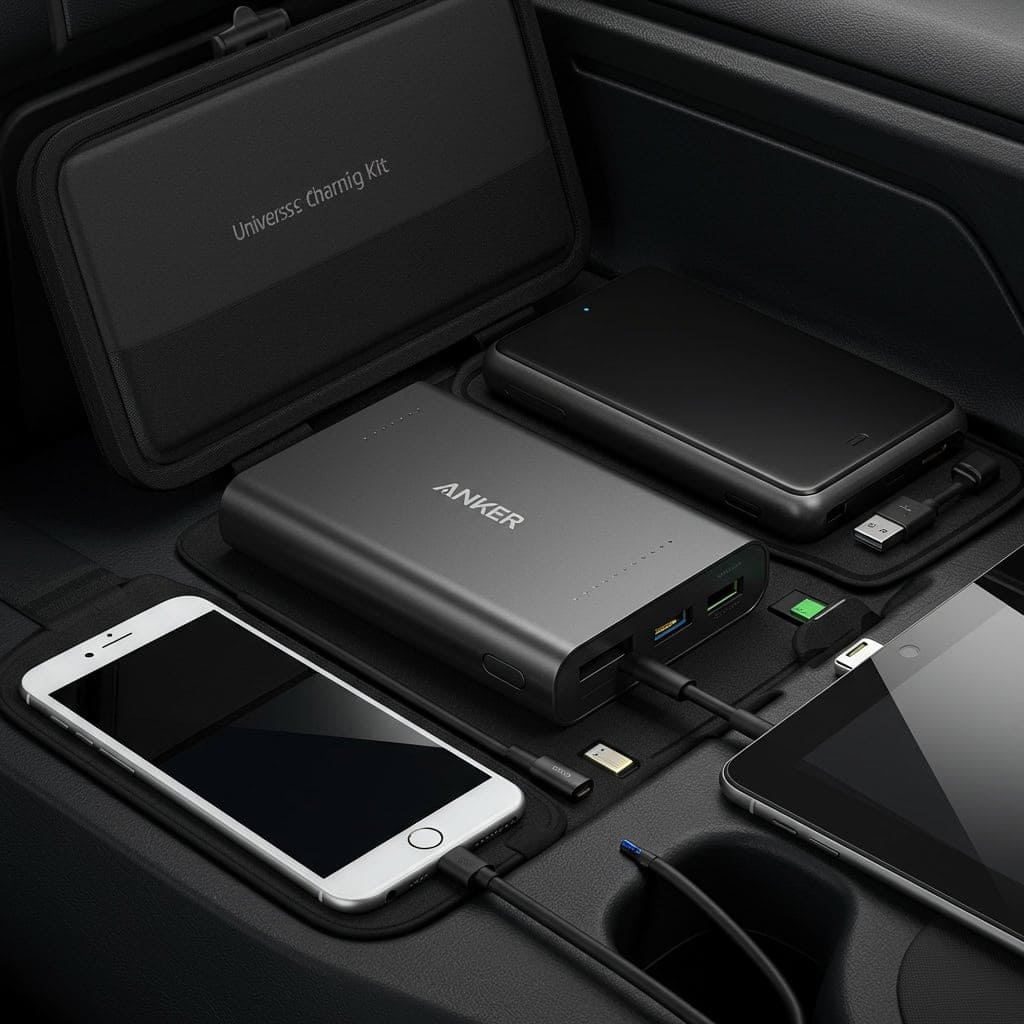
Maintaining a charged phone is crucial during unexpected vehicle breakdowns or delays, as it enables you to call for assistance and access navigation tools. Including universal charging cables and a reliable power bank in your emergency kit ensures your devices remain operational when needed most. For instance, the Anker 737 Power Bank (PowerCore 24K) offers multiple charges for smartphones and tablets, providing peace of mind during emergencies.
6. Child Identification Card
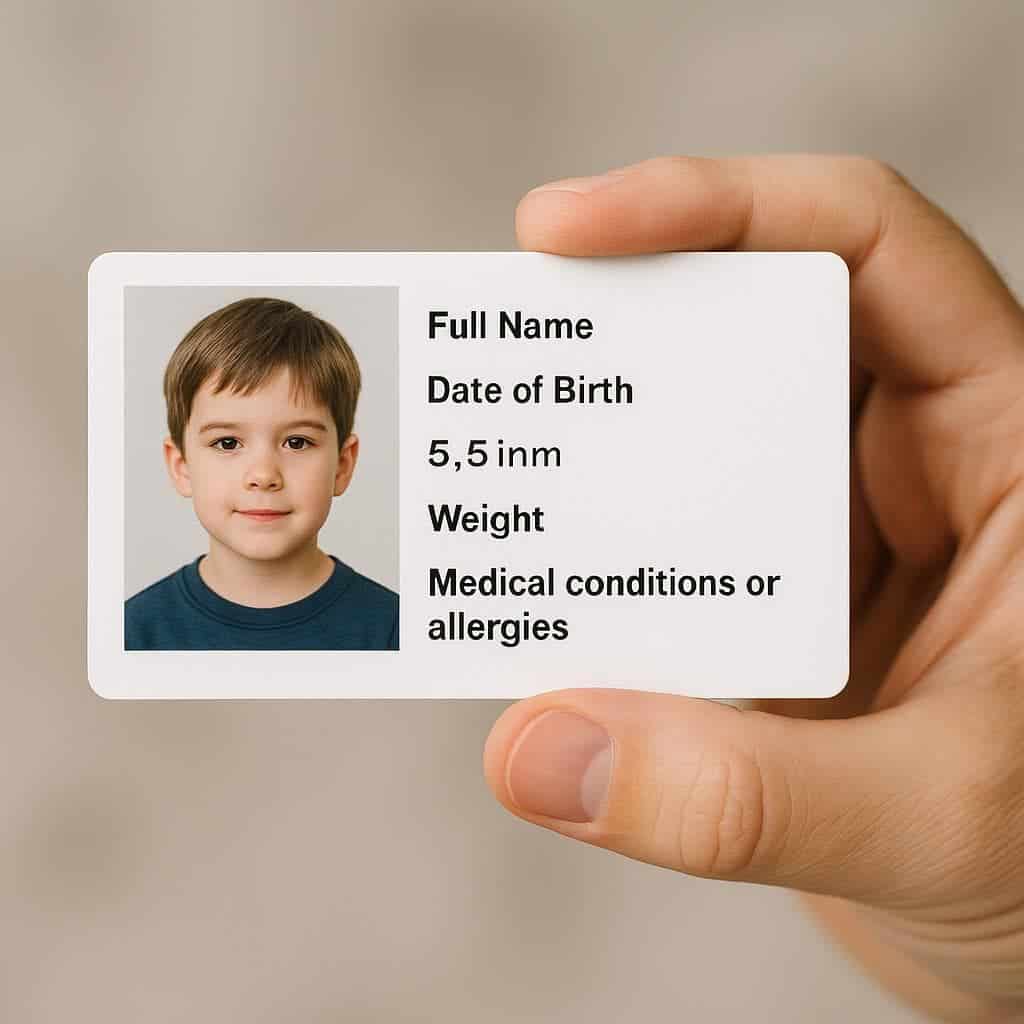
An up-to-date child identification card is crucial for ensuring your child’s safety during emergencies. This card should include essential information such as the child’s full name, date of birth, recent photograph, height, weight, and any medical conditions or allergies. While smartphones can store this information, they are susceptible to battery depletion or loss, making physical cards more reliable. Having a child identification card readily available allows parents and authorities to act swiftly in critical situations, facilitating a faster and more efficient response.
7. Non-Perishable Snacks
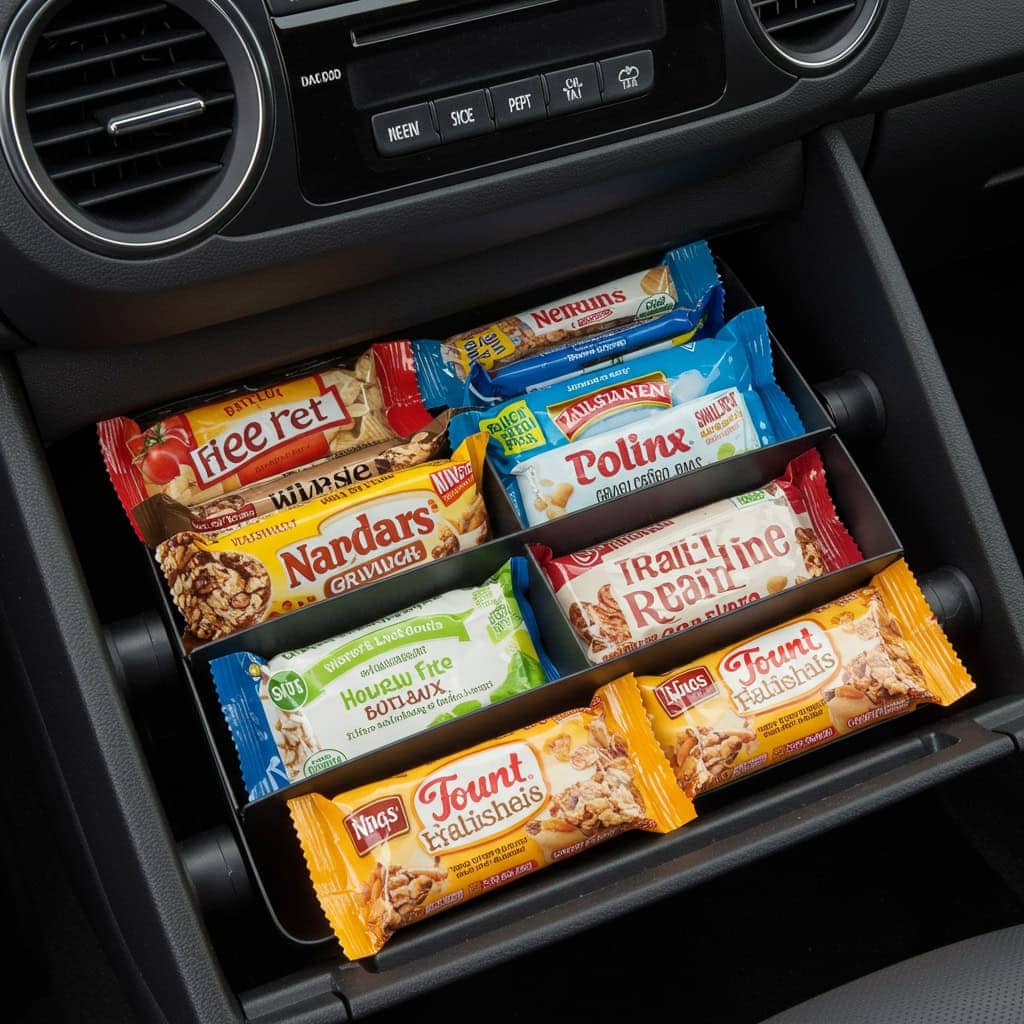
Storing long-lasting, allergy-aware snacks such as granola bars, fruit pouches, and trail mix can be invaluable during unexpected delays or emergencies. These compact, shelf-stable options provide essential nutrients and energy, helping to keep children calm and satisfied. Unlike fresh foods, which can spoil and attract pests, non-perishable snacks are convenient and safe for extended periods. For example, GoGo squeeZ fruit pouches offer 100% real fruit, are unsweetened, and free from gluten, dairy, and nuts, making them suitable for children with dietary restrictions. Including a variety of these snacks in your emergency kit ensures that your family remains nourished and comfortable during unforeseen situations.
8. Bottled Water (or Collapsible Water Bottles)
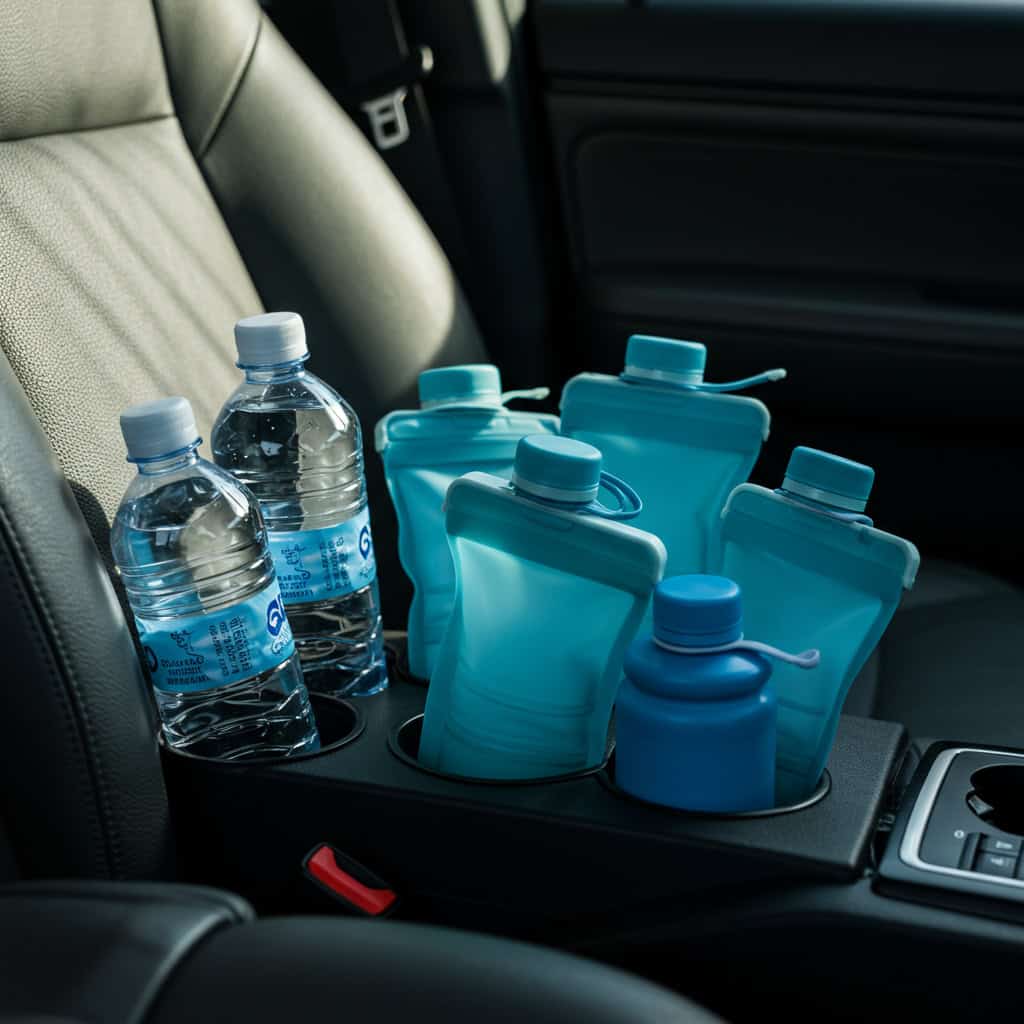
Carrying sealed bottled water or collapsible water bottles is essential for staying hydrated during unexpected delays or emergencies. Sealed bottled water, made from PET plastic, is designed to withstand high temperatures and is generally safe for consumption even when exposed to heat. (bottledwater.org) However, once opened, the water can become a breeding ground for bacteria, especially in warm conditions. (click2houston.com) To mitigate this risk, consider using insulated, reusable water bottles made of materials like stainless steel or glass, which can maintain water temperature and reduce bacterial growth. (eatingwell.com) Regular cleaning of reusable bottles is crucial to prevent bacterial contamination. (sciencefocus.com) By choosing the appropriate water storage option and maintaining proper hygiene, you can ensure access to safe drinking water during emergencies.
9. Flashlight and Extra Batteries
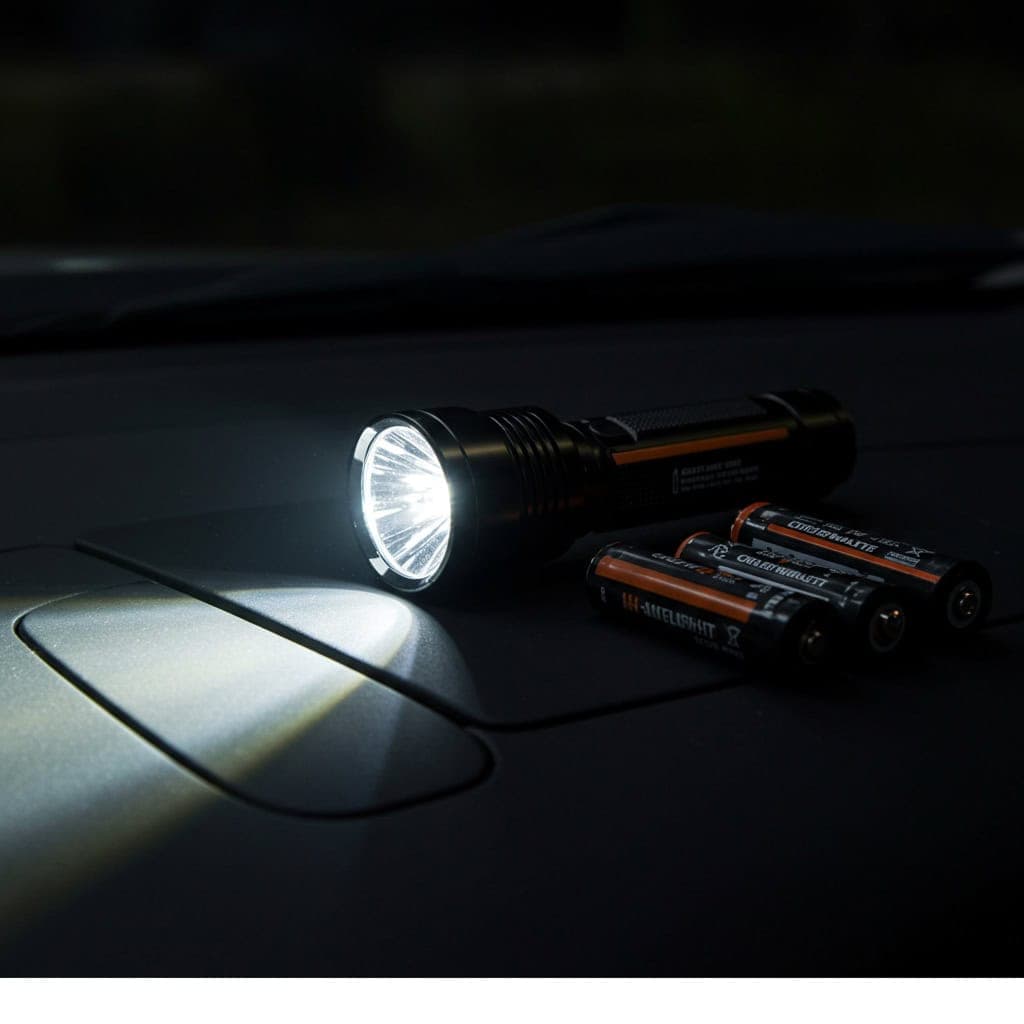
A high-powered LED flashlight is essential for vehicle emergencies and repairs, providing reliable illumination in low-light conditions. Unlike smartphone flashlights, which typically emit around 40-50 lumens and can quickly drain your phone’s battery, dedicated flashlights offer higher brightness and longer operational time. For instance, a flashlight with a lumen output of at least 100 lumens is recommended for general illumination and visibility during car-related tasks. (10bestpicked.com) Additionally, smartphones are susceptible to damage if dropped, whereas a durable flashlight is designed to withstand such impacts, ensuring consistent performance when needed most. (howtogeek.com) Therefore, keeping a reliable flashlight with extra batteries in your vehicle enhances safety and preparedness during unforeseen situations.
10. Spare Clothes and Diapers
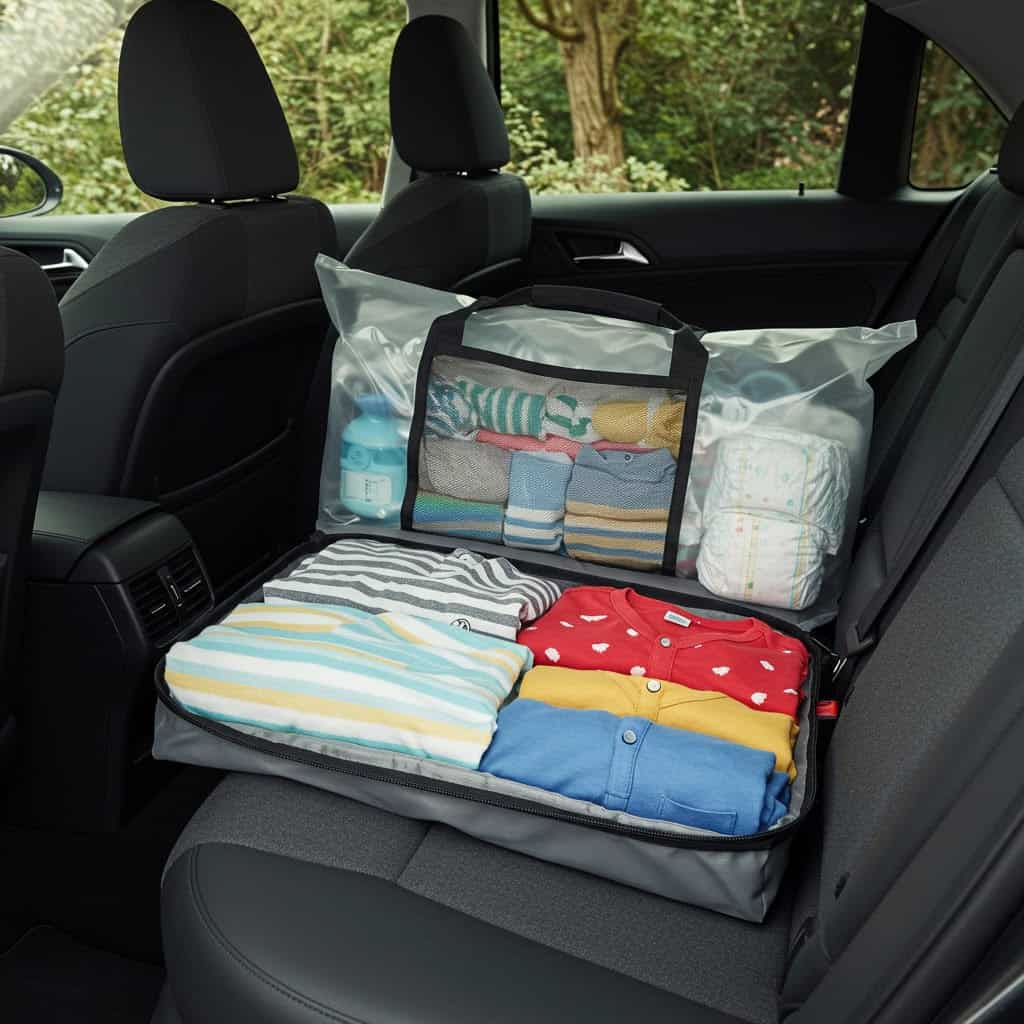
Keeping seasonally appropriate spare clothing and diapers in a watertight bag is essential for managing unexpected messes during travel. Children are prone to spills, accidents, and sudden weather changes, and having backup outfits ensures they remain comfortable and clean. (carfax.ca) Unlike dealing with messy or uncomfortable children after spills or accidents, having spare clothes readily available allows for quick changes, minimizing discomfort and potential skin irritations. (famousparenting.com) This preparedness not only maintains hygiene but also reduces stress during unforeseen situations, ensuring a smoother journey for both parents and children. (parentingchaos.com)
11. Car Escape Plan Visual
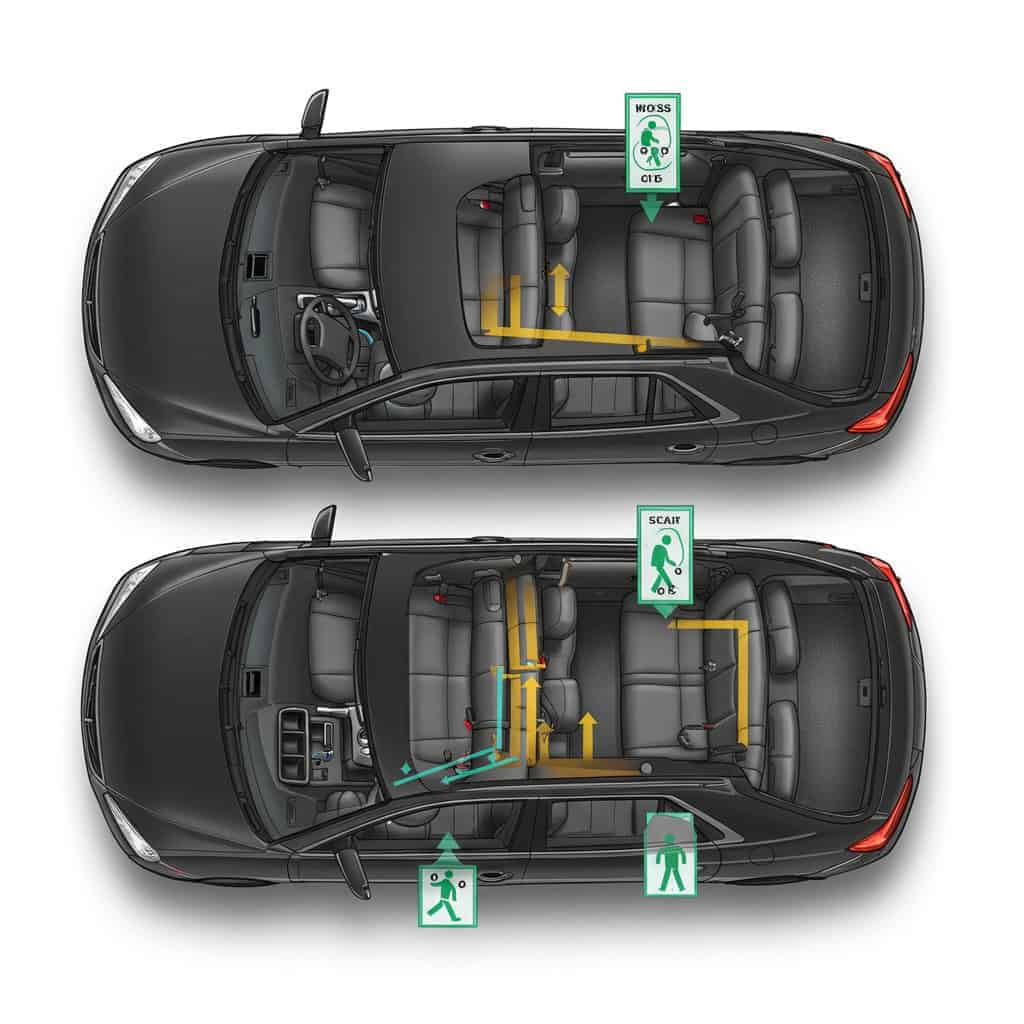
Creating a simple, kid-friendly printed escape plan for your vehicle is essential for ensuring children’s safety during emergencies. This plan should clearly depict all exit points, including doors and windows, and outline the safest routes to these exits. By having a visual reference, children can quickly understand and follow the escape procedures without panic or confusion. This proactive approach empowers them to act confidently in critical situations, reducing the risk of injury and facilitating a swift evacuation. For more information on emergency preparedness for children, refer to resources provided by the Commonwealth of Pennsylvania. (pa.gov)
12. Disposable Bags and Wipes

Storing biodegradable bags and moist wipes in your vehicle is essential for managing unexpected messes, car sickness, or diaper changes. These eco-friendly wipes are designed to break down naturally, reducing environmental impact. For instance, Surviveware’s biodegradable wet wipes are made from durable, soft cloth and begin to decompose within 28 days after use, fully breaking down in 8-12 months. (news.marketersmedia.com) Unlike napkins, which may be insufficient for larger messes, these wipes provide a more effective and hygienic solution. Additionally, using biodegradable bags ensures that waste is disposed of responsibly, minimizing environmental harm. By keeping these items in your car, you can address spills and accidents promptly, maintaining cleanliness and comfort during your travels.
13. Reflective Triangle and High-Visibility Vest
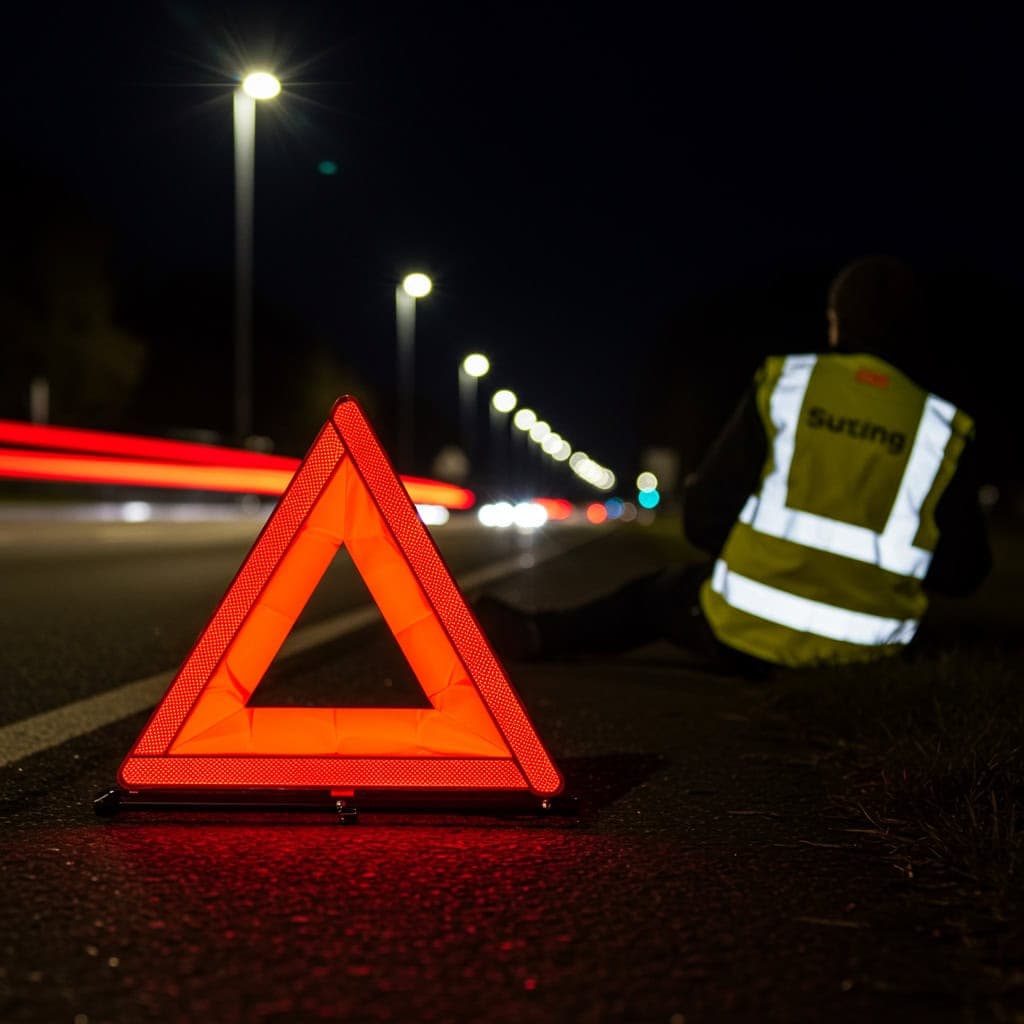
During nighttime vehicle breakdowns, using a reflective triangle and wearing a high-visibility vest significantly enhance your safety by making you more visible to other drivers. Reflective triangles, typically bright orange with reflective materials, are designed to be placed behind your vehicle to alert oncoming traffic of a hazard. When positioned correctly, they can be seen from a distance, allowing drivers to slow down and navigate safely. (shipex.com) High-visibility vests, made from fluorescent materials with reflective strips, further increase your visibility. Wearing such a vest ensures that you are easily seen by other motorists, even in low-light conditions. (nk-roadstud.com) Relying solely on hazard lights or waving a flashlight may not provide sufficient visibility, especially in low-light conditions or at high speeds. Combining hazard lights with a reflective triangle and high-visibility vest offers a more effective safety strategy during roadside emergencies.
14. Emergency Contact Sheet
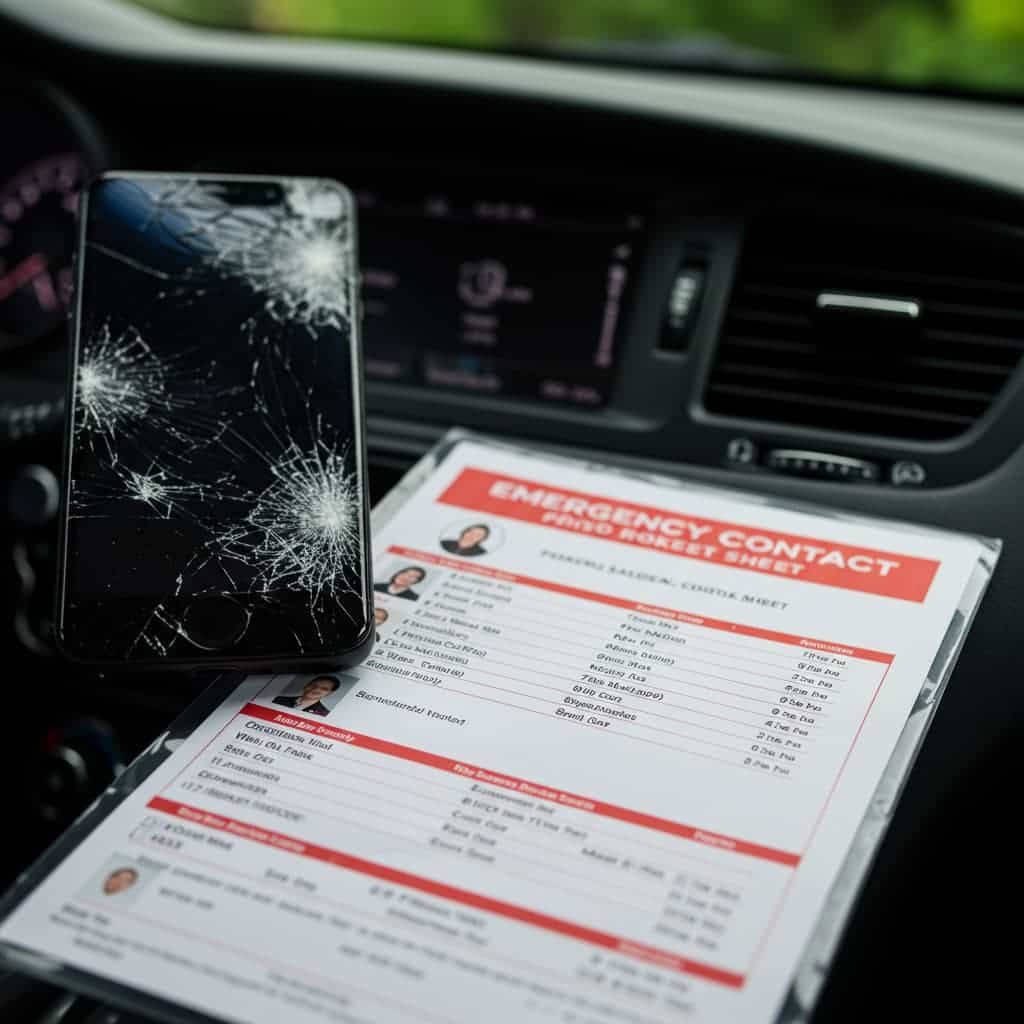
Maintaining a printed list of emergency contacts—including family members, friends, pediatricians, and roadside assistance services—is crucial for ensuring swift communication during emergencies. Relying solely on digital contacts can be problematic if your phone is damaged, battery-depleted, or inaccessible, especially for children unfamiliar with using phones. A physical contact sheet ensures that essential information is readily available, facilitating prompt assistance when needed. For instance, the Florida Department of Highway Safety and Motor Vehicles encourages drivers to register emergency contact information, highlighting its importance in critical situations. (flhsmv.gov)
15. Compact Car Jump Starter
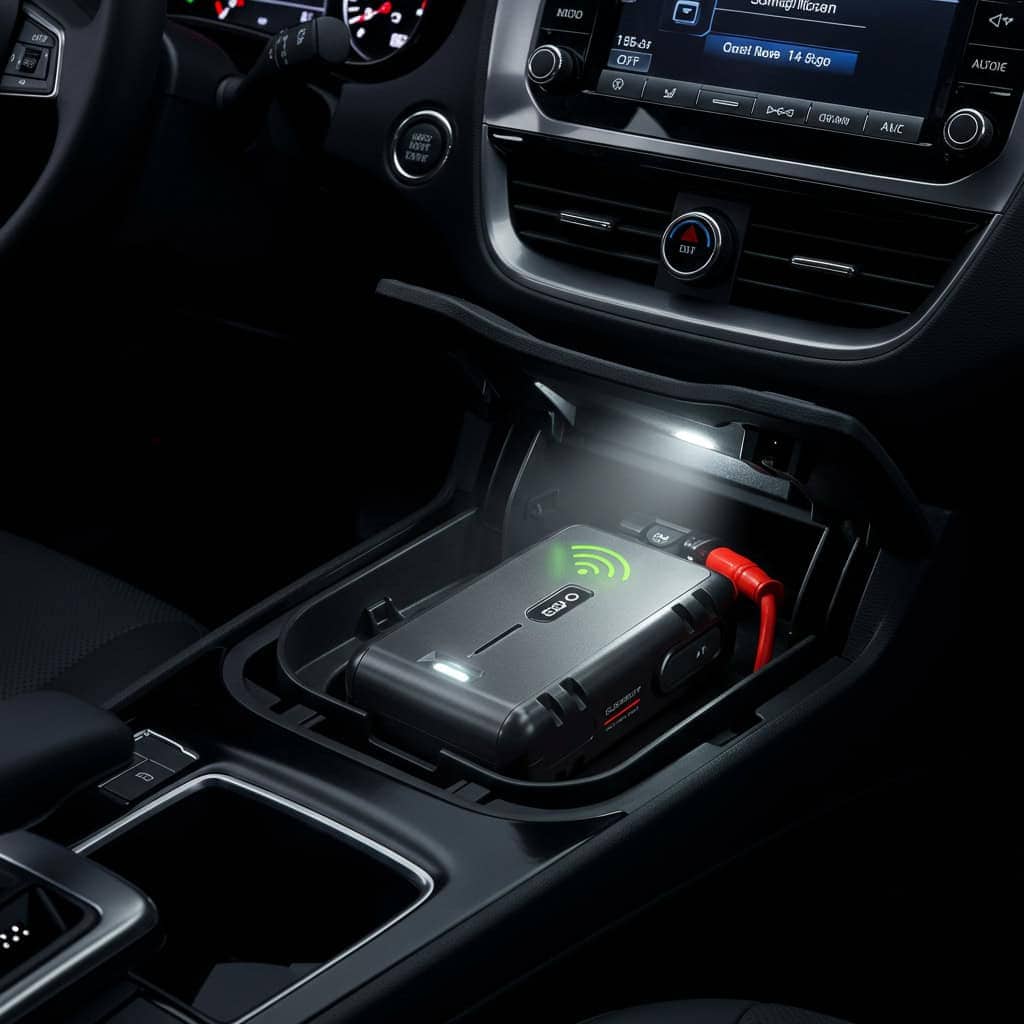
A portable jump starter is an invaluable tool for vehicle emergencies, allowing you to restart your car’s battery without external assistance. Unlike traditional jumper cables that require another vehicle and can be cumbersome to use, a compact jump starter fits easily into your glove box or trunk, ensuring it’s readily available when needed. Many models also include built-in safety lights, enhancing visibility during nighttime breakdowns. This self-sufficiency eliminates the uncertainty of waiting for help from strangers or the potential unreliability of jumper cables, providing a quick and efficient solution to get you back on the road. (auxito.com)
Conclusion
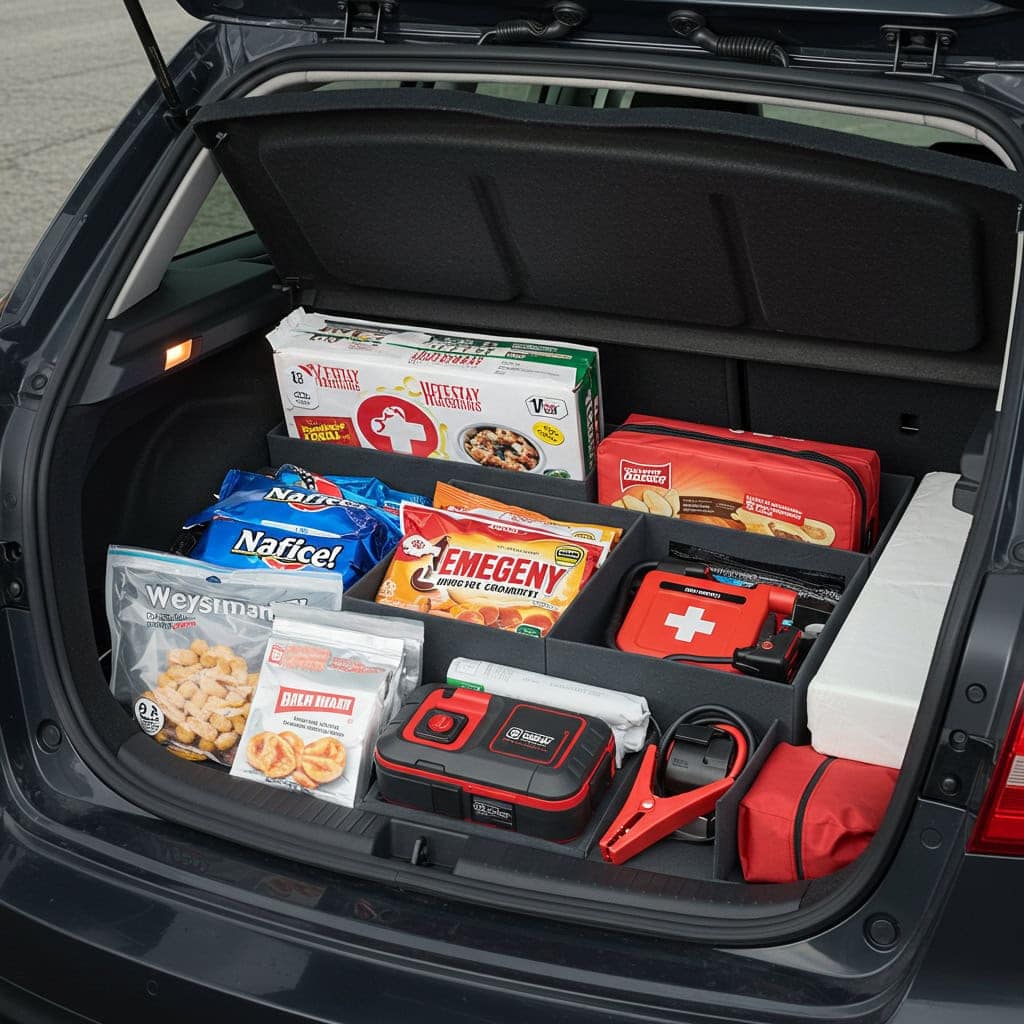
Proactively assembling a comprehensive car emergency kit is vital for ensuring the safety and well-being of all occupants on the road. By including essential items such as a first aid kit, flashlight, non-perishable snacks, and a compact car jump starter, you equip yourself to handle unforeseen situations effectively. Regularly inspecting and updating these supplies provides peace of mind, knowing you’re prepared for emergencies. For more information on essential car emergency kits, refer to resources provided by the Meemic Foundation. (meemic.com)
.article-content-img img { width: 100% }




